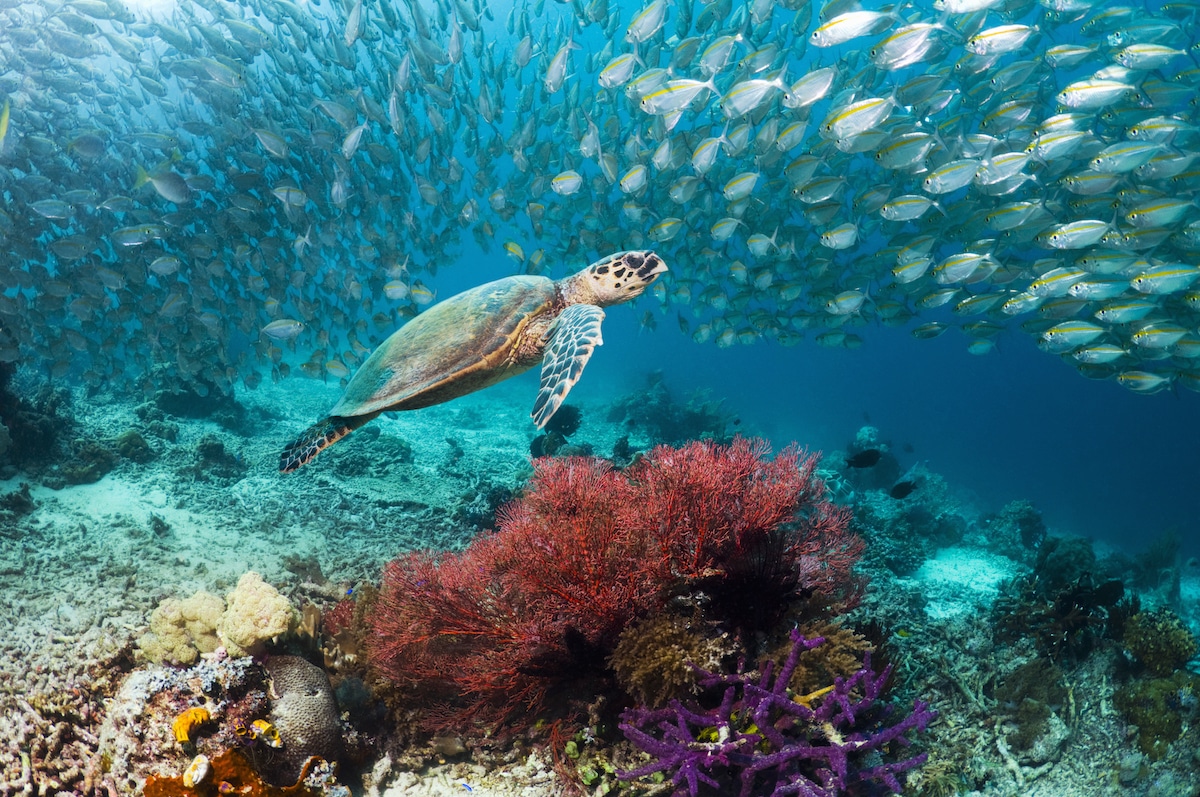Newly Adopted UN High Seas Treaty Gives Ocean a ‘Fighting Chance’

 Why you can trust us
Why you can trust us
Founded in 2005 as an Ohio-based environmental newspaper, EcoWatch is a digital platform dedicated to publishing quality, science-based content on environmental issues, causes, and solutions.
After almost two decades of negotiations, the 193 United Nations Member States have adopted a landmark legally binding marine biodiversity treaty for the high seas beyond national boundaries, covering two thirds of Earth’s oceans, UN Secretary-General António Guterres announced yesterday during the Intergovernmental Conference on Marine Biodiversity in New York.
The purpose of the High Seas Treaty is to ensure the sustainable use and conservation of marine biological diversity in areas beyond national jurisdiction, a UN press release said.
Individual countries have the responsibility to sustainably use and conserve waterways under their jurisdiction, and now the high seas also have protection from unsustainable fishing activities, pollution and other destructive and depleting forces.
“The ocean is the lifeblood of our planet. And today, you have pumped new life and hope to give the ocean a fighting chance,” Guterres said in New York, according to an additional press release from the UN. “And you have done so at a critical time.”
The “high seas” treaty is internationally legally binding and was adopted by the Intergovernmental Conference on Marine Biodiversity of Areas Beyond National Jurisdiction under the 1982 UN Convention on the Law of the Sea.
The 75 articles of the high seas agreement seek to take stewardship of the world’s oceans for present and future generations, care for and protect the marine environment and ensure its responsible use, maintain the integrity of undersea ecosystems and conserve marine biological diversity’s inherent value, another press release from the UN said.
Millions of tons of plastic and toxic chemicals are contaminating coastal ecosystems, with dire consequences for fish, marine mammals, sea turtles and seabirds. These pollutants are eventually consumed by humans through the food chain.
More than 37 billion pounds of plastic made its way into Earth’s ocean in 2021, which accounted for 85 percent of marine garbage. It is predicted that marine litter will double or triple annually by the year 2040, according to the most recent UN Sustainable Development Goals report.
“Around the world, the ocean is under threat on multiple fronts. Climate change is heating our planet, disrupting weather patterns and ocean currents, and altering marine ecosystems and the species living there,” Guterres said in New York. “Sea surface temperatures in the North Atlantic have recently risen so high that they are literally off the charts. The axis of a long-standing graph tracking those temperatures had to be redrawn to reflect unprecedented temperature increases.”
The high seas treaty contains “polluter-pays” provisions, as well as provisions requiring parties to assess the potential environmental impacts of planned activities that reach beyond their jurisdictions.
According to the UN, more than a third of fish stocks globally are over-exploited. The treaty highlights the importance of increased collaboration between regional seas organizations and fisheries management institutions.
“Marine biodiversity is under attack from overfishing, over-exploitation and ocean acidification. Over one third of fish stocks are being harvested at unsustainable levels. And we are polluting our coastal waters with chemicals, plastics and human waste,” Guterres said. “The historic achievement we celebrate today is vital to address these threats, and ensure the sustainability of those areas not covered under national jurisdiction — over two thirds of the ocean.”
The planet is experiencing record-high ocean temperatures that are fueling more intense and frequent storms, rising sea levels and increased salt content in aquifers and coastal areas.
The treaty offers an integrated ocean management approach for building ecosystem resilience in order to address ocean acidification and other detrimental effects of climate change. The new agreement also offers guidance for maintaining and restoring the integrity of ecosystems, including carbon cycling systems.
The provisions of the treaty also recognize the traditional knowledge and rights of local communities and Indigenous peoples, the need for equitable and fair benefits sharing and the freedom of scientific research.
Guterres said the newly agreed upon treaty “is critical to addressing the threats facing the ocean, and to the success of ocean-related goals and targets, including the 2030 Agenda.”
Some of the goals of the treaty include Sustainable Development Goal 14, which aims at preventing and significantly reducing all types of marine pollution by 2025, as well as ending overfishing.
The agreement will allow for the establishment of marine protected areas in the international seabed area and the high seas. It also contemplates the particular circumstances landlocked developing nations and small island nations are facing.
“We have a new tool,” UN General Assembly President Csaba Kőrösi told the Intergovernmental Conference delegates on Monday, according to the UN. “This landmark achievement bears witness to your collective commitment to the conservation and sustainable use of marine biological diversity in areas beyond national jurisdiction. Together, you laid the foundation for a better stewardship of our seas, ensuring their survival for generations to come.”
Subscribe to get exclusive updates in our daily newsletter!
By signing up, you agree to the Terms of Use and Privacy Policy & to receive electronic communications from EcoWatch Media Group, which may include marketing promotions, advertisements and sponsored content.

 233k
233k  41k
41k  Subscribe
Subscribe 




